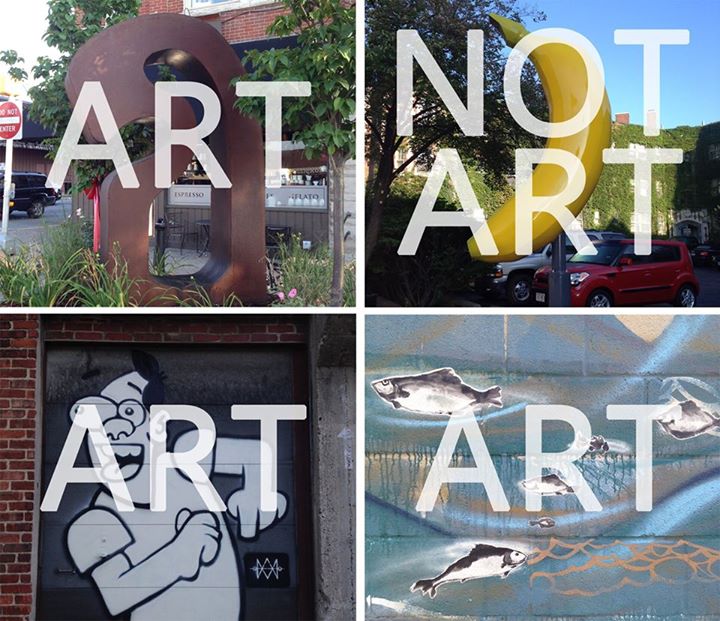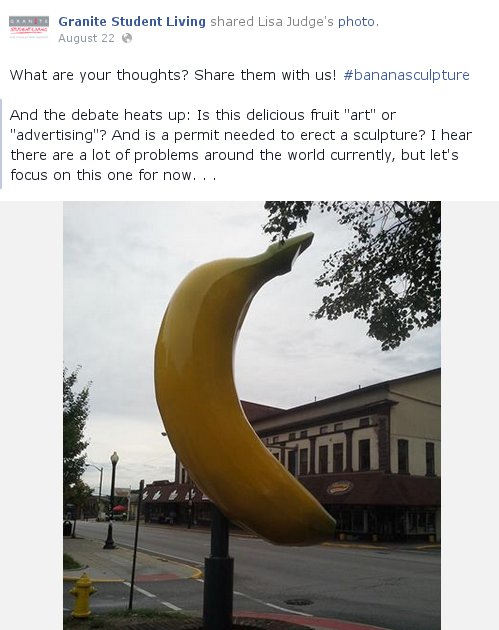Caleb Benner created an interesting comparative collage of what he considered art and not art in and around #greaterlala.
 Already, the Banana Statue, Granite Management‘s latest (and successful) attempt at a publicity stunt, is gaining traction.
Already, the Banana Statue, Granite Management‘s latest (and successful) attempt at a publicity stunt, is gaining traction.
- Art or advertisement? Banana sculpture attracting eyes of WL officials
- Another banana pops up in West Lafayette
- Bangert: Touché, Banana Sculpture, touché
Fascinating how we need to revisit the same question over a year later. I ended my Letter to the Editor from May of 2013 regarding the Banana House with the following:
Creating art with direct and commercial messages cheapens its impact. Instead, we need lasting art that profits the entire community.
Granite continues to cheapen public art with its commercial message. At least Joel Brovont is admitting that the statue is advertising and art. Before it was just a funky coincidence.
UPDATE 2014-08-24:
Granite has created the hashtag, #bananasculpture for their latest contribution to the public’s visual space.
All global problems start locally somewhere.
You can read my full Letter to the Editor below:
More community art, not more advertising
Upton Sinclair stated that all art is propaganda. All advertising tries to propagate. Therefore, all art is advertising … something. Let’s reframe the question to focus on the message of Granite’s Banana House art in West Lafayette. Is the banana a funky, artistic message or an attempt to obfuscate a commercial one?
J&C columnist Dave Bangert points out in his Sunday article that Granite has already established using a banana to denote its property: houses, apartments, trucks, website, etc.
In an earlier J&C article, a Granite manager stated, “It was just a property that needed repainted, and we wanted to get creative with how we repainted it.”
Creatively trying to avoid the ordinances of Tippecanoe County? This is not just a West Lafayette ordinance, despite what people think.
If this was a private residence, the conversation would be completely different. However, Granite is attempting to exploit the sympathies of those desiring more public art installations.
Continuing with a recent letter to the editor’s vein of logic, if this advertisement is allowed to stay, other property owners will adopt similar symbology to skirt around the established rules of the Unified Zoning Ordinance of Tippecanoe County, page 178, in order to take advantage of the Community of Choice argument.
Instead of celebrating the efforts of commercial entities attempting to disguise their billboard advertising as public (pop) art, let us work with Tippecanoe Arts Federation and other organizations to promote local artists and their projects to funkify the area we love so dearly.
Creating art with direct and commercial messages cheapens its impact. Instead, we need lasting art that profits the entire community.
